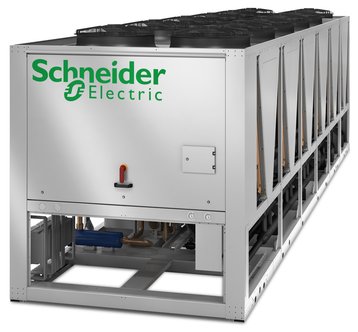When it comes to maximising energy efficiency in a data center, the most important part to consider after the IT itself is the cooling infrastructure. The combination of chillers, compressors and fans required to keep the operating temperatures at necessary levels typically consumes the second largest portion of energy in the data center after its IT equipment. Consequently, much effort should be devoted to ensure that the cooling effort is as efficient as possible.
Three essential steps to achieve efficiency are selection of an appropriate cooling architecture, management of airflow in the IT space and adoption of an effective cooling control system. All three steps are considered at the design stage, but to ensure that the intended efficiencies are achieved the most important step during the data center’s working life is to ensure that the control system is properly designed and operated.
After all, cooling system dynamics are complex. The operating temperature of an IT room as a whole, and in specific locations, fluctuates according to a number of variables. Ensuring that the temperatures at various locations throughout the installation are properly monitored and that the requisite controls are in place to take appropriate action are essential to maintaining an optimal trade off between cooling effectiveness and electrical efficiency.
A particular challenge is to realise that often the most appropriate measure to take in response to localised rises in temperature may be counter intuitive.
For instance, in the case of a design based around an air-cooled packaged chiller: if the IT temperature set point is increased and the chilled water temperature is increased, the chiller energy decreases for two reasons. First, the data center can operate in economiser mode for a greater portion of the year and secondly, the chiller efficiency increases.
However if the computer room air handler (CRAH) supply air temperature is not increased proportionally to the chilled water temperature, the cooling capacity of the CRAH decreases and the CRAH fans need to spin up to compensate. This in turn INCREASES the energy consumption of the CRAH. Furthermore, the dry cooler energy increases because the number of economiser hours increases.
Clearly, with so many interdependent systems operating in reaction to each other, it can be difficult to determine, without the most careful monitoring and management of all parts of the system, just how effective is an individual operation intended to increase efficiency. It might have the opposite effect in the long run.
An effective control system should enable management to consider the overall effect of adjustments to one part of the cooling infrastructure on the installation as a whole. That in turn means that manual adjustments made to individual elements should be superseded by automatic controls as far as possible.
An effective control system should shift between different operation modes like mechanical, partial economiser and full economiser mode automatically based on outdoor air temperatures and IT load to optimise energy savings. It should also co-ordinate the operations of indoor cooling devices such as CRAHs and CRACs to prevent demand fighting between the two. IT space humidity should be centrally controlled by maintaining dew point temperatures at the IT intakes, which is more cost effective than maintaining relative humidity at the return of cooling units. Flexibility and ease of maintenance are also key elements of a good control system.
A good methodology for building up an effective cooling control system is to take a hierarchical approach based on systems which operate at the device level, group level, system level and facility level.
Device-level control involves the control of individual units such as chillers. Such controls are usually built into the equipment by vendors themselves. Device level controls typically do not cater for communication with other devices, but act as the foundation for higher level control plans.
Group level control refers to the co-ordination of several units of the same type of device, typically from the same equipment vendor and controlled by the same control algorithm. This allows some resolution of demand fighting and permits greater co-ordination between different units but its main limitation is that it can only control similar devices, and typically only from the same vendor.
System-level control, the next level up, co-ordinates the operation of different cooling subsystems within a data center, for example a pump and a CRAH. Again though, the limitation is that such control systems typically work best with equipment from the same vendor and so for a more holistic control system for a large data center, it is necessary to consider the highest level of control system: facility level control.
Such a system integrates all functions of a building into a common network that controls everything in the building from heating, ventilation, air conditioners and lighting systems to the security, emergency power and fire-protection systems. It provides the most comprehensive picture and therefore enables the most co-ordinated and efficient cooling strategy involving all of a data center’s operations.
Patrick Donovan is senior research analyst at the data center science center IT division, Schneider Electric.



